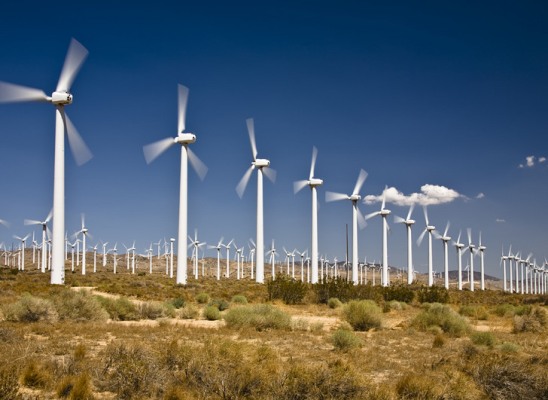India’s Ministry of New and Renewable Energy (MNRE) has recently amended bidding guidelines for wind power developers notified earlier on December 8, 2017.
Revised bidding guidelines which allow wind power developers to acquire land on or before scheduled commercial date (SCD) of eighteen months, revise declared capacity utilisation factor (CUF) once within first three years of commercial operation date (COD) and incentivise early project completion would bode well for the wind energy sector.
These new amendments will benefit wind project developers. However, land acquisition and evacuation infrastructure continue to remain major impediments for timely completion of wind projects, Amod Khanorkar, senior director and Ratnam Raju Nakka, associate director of CARE Ratings said.
Extant guidelines provides seven months for land acquisition from the date of power purchase agreement (PPA) and the same has been extended to eighteen months from the date of execution of the PPA or Power Sale Agreement (PSA), whichever is later.
Though, new guidelines would provide enough time to acquire land, any significant delay in land acquisition till the SCD would leave little head room in terms of time lines for project execution unless significant delay in execution of PPA or PSA itself.
Revised guidelines allow WPG to revise declared annual Capacity utilisation factor (CUF) once within first three years of commercial operation date (COD) would benefit WPG as it provides higher operational track record to arrive at better estimate while revising CUF. Penalty for shortfall in energy generation has been fixed at 50 percent of the PPA tariff compared to minimum of 75 percent of tariff which provides some respite.
The report said wind capacity additions have been sluggish during FY2017-18 and FY2018-19 due to transition from Feed-in-Tariffs (FiT) regime to competitive bidding, withdrawal of generation based incentives, limited availability of financially viable wind resource areas, delay in land acquisition and lack of evacuation infrastructure.
Wind capacity additions in FY2017-18 and FY2018-19 was at ~1.9 and 1.6 GW respectively against 5.5 GW during FY2016-17. Wind capacity addition in Q1FY2020 was at ~0.7 GW. Transmission has been major bottleneck for wind energy as the gestation period of wind energy projects is much shorter (eighteen months) in comparison to 2 to 3 years construction period of transmission projects.
MNRE under its green energy corridor project is developing 12,600 circuit kilometres (ckm) of transmission lines and 37000 Mega VoltAmperes (MVA) of substations.
Total bids awarded under competitive bidding were at ~12.7 GW (excluding hybrid solar plus wind projects of 1.6 GW) and ~5.5 GW of projects are concentrated in Gujarat — as on June 30, 2019.
Wind energy tariff fell to INR 2.43 per unit in auction conducted by Gujarat Urja Vikas Nigam. Projects at such a low tariff are viable only in windy states like Gujarat and Tamil Nadu.
Project developers are facing hurdles in land acquisition as most of high wind power density sites with connectivity are already being taken.
CARE expects capacity addition to remain subdued at ~3.0 GW during FY2020 as projects bid out under competitive bidding are running behind SCD due to delay in land acquisitions and lack of evacuation infrastructure.
Out of 12.7 GW capacity of projects awarded under competitive bidding, ~1.5 GW capacity of projects have been commissioned as on June 30, 2019.
Another 5 GW awarded under SECI Tranche II (1 GW), SECI Tranche III (2 GW), SECI Tranche IV (2 GW) have scheduled commissioning dates before end of FY2020.

